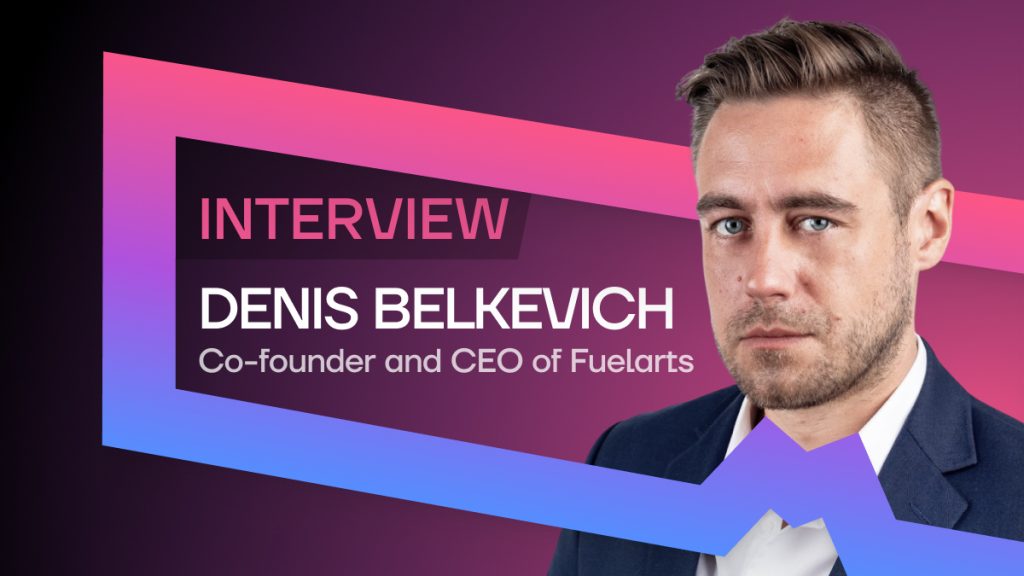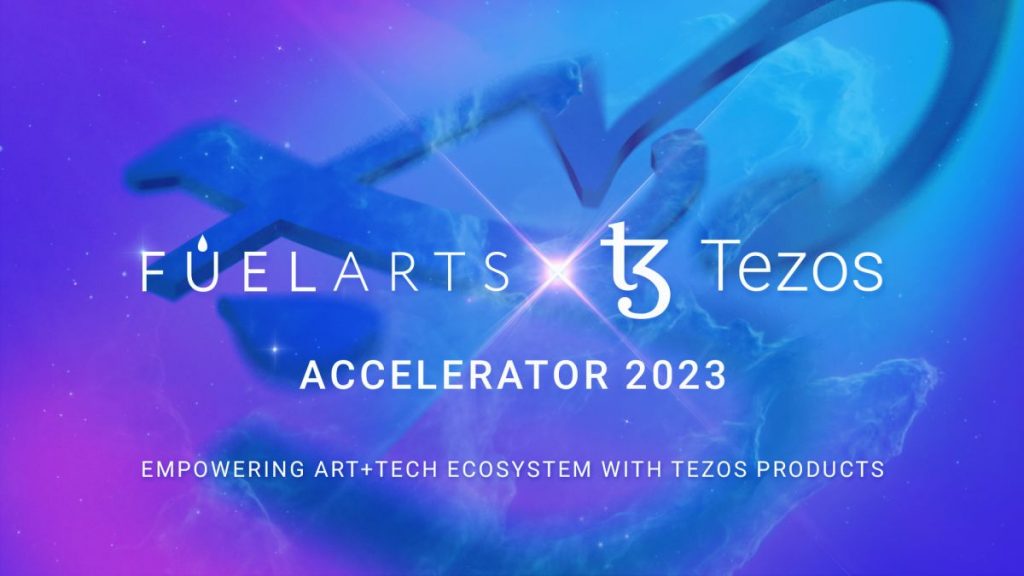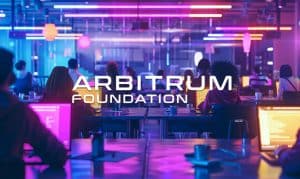Fuelarts CEO Denis Belkevich Talks About Investment Trends and Fuelarts’ NFT Report

In Brief
Fuelarts CEO Denis Belkevich talks about the current investment trends, the influence of blockchain on the art market, and the company’s plans.
On March 14, Fuelarts released its third Art+Tech & NFT Startups Report. It includes a market overview, investments, trends and opportunities, and interviews with opinion leaders.

Metaverse Post talked to Denis Belkevich, the co-founder and CEO of Fuelarts and one of the leading art economists. He is a professional art adviser specializing in physical and digital assets management. As of today, Belkevich is also a visiting lecturer at Sotheby’s Institute of Art in New York.
Together with former COO of Christie’s Americas Roxanna Zarnegar, Denis Belkevich founded Fuelarts in 2019. Today, the company includes three main structures: Fuelarts Insights, Fuelarts Capital, and Fuelarts Accelerator.
On March 14, the platform released its third Art+Tech & NFT Startups Report. The comprehensive research includes a market overview, investments, trends and opportunities, and interviews with opinion leaders.
Denis Belkevich shared his opinion on the current trends and broadened our understanding of the complex web3 and art markets. In this interview, he discusses investment trends, talks about the influence of blockchain on the art market, and speaks about Fuelarts’ plans.
How do you think blockchain affects the art market today? How could this change in the future?
Blockchain can impact the art market in several ways. It can function as a data registry, provide reliable information storage, decentralize contractual relations, and facilitate cross-border payments. However, the adoption of legislative frameworks and regulations in the field of cryptocurrencies has lagged far behind the development of technologies offered by Art+Tech startups, which has hindered progress in the market. Currently, only the first two directions are fully functional in the art market: data on the object’s origin and transactions with art objects. The system of automatic royalties payments works less efficiently, as everything depends on a well-designed smart contract and the sales platform’s willingness to share commissions with artists. However, the dream of most collectors is a payment system that allows easy and quick acquisition of art in any country in the world or peer-to-peer transactions without intermediaries. This system is still under development.
Additionally, introducing blockchain into the art market has been met with resistance from older-generation collectors, who are accustomed to the confidentiality of transactions and are hesitant to disclose information about the contents of their collections. To address these concerns, forms such as “private blockchain” or “blockchain with a customizable level of public access” have emerged, which were previously considered unacceptable in the crypto community. Furthermore, the older generation of collectors does not accept fractional ownership of art objects, as they believe that owning the entire asset is crucial. However, with the entry of a new generation of Gen Z and crypto-millennial collectors, the situation is beginning to change, as younger collectors are willing to share their assets, distribute risks, and create a business community.
What are the investment trends in web3 art and tech startups?
Over the past year and a half, the investment focus in the Art+Tech segment has changed three times. 2021 was the year of marketplaces when most investors invested in NFT-selling platforms. In the first half of 2022, the market became crowded. So, users started looking for more quality (curated) art, and the focus shifted to content producers. Most investments started coming to startups with the prefix “labs,” such as design studios and creative agencies creating NFT series or developing metaverses.
In the second half of 2022, the focus shifted to analytics startups. Platforms that create NFT indices, analyze the portfolios of existing collectors, and send market signals to owners received the most attention. After going through a speculative cycle with NFTs, the market recognized that there would be no further development without digital asset analytics. This is also a positive signal because investors believe in the future of NFTs in the medium term. Otherwise, why invest in indices that will not launch before 2024?
As we begin 2023, we see a significant increase in investment in Art+Tech startups that develop AI. This applies to all links in the value chain: production, trade, management, and analytics. Today, AI technologies help create art objects (generative art), but in the future, they will be able to manage a collection or an artist’s career (intuitive management) or calculate the best time to buy new works or sell them. There is also significant interest in AI-based SaaS solutions that can integrate into any technological product, depending on the needs of a startup.

How do you think the investment trends of 2022 will change in 2023?
Despite the bearish trend, 2022 brought several historic records to the Art+Tech market. Cumulative investments in infrastructure startups amounted to $3.48 billion, which accounts for 49.3% of the cumulative investments in the Art+Tech industry since 2000. Two hundred forty-two startups were funded, representing 28.6% of all companies since 2000. Additionally, for the first time in history, nine startups received investments totaling over $100 million at once during a single year.
However, the current economic situation has influenced investor behavior. The percentage of startups that received their first funding in the year of their founding noticeably decreased in 2022. Instead, investors preferred to invest in startups that they had supported in earlier rounds.
The rest of the investors chose to test the waters in 2022. Out of 854 investors in Art+Tech startups, 81.9% deployed their money only in one entity. Their caution is understandable since most investors hold onto their holdings in an uncertain market. They know how to make money in both high and low markets. However, when the market is in a state of uncertainty, they tend to stop investing and take the position of an observer. Therefore, out of 34 investment funds that raised more than $24 billion, only $1.7 billion was invested in web3 startups. We believe that the situation will improve in 2023, and planned transactions will begin to take place.
In the meantime, in 2023, investors will continue to monitor how startups respond to the crisis to identify the most resilient ones, both in business and psychological terms, before market growth begins. Furthermore, attempts to make M&A deals at a discount, buying out startups at a minimum price on the verge of default, will continue. Garnering support for startups will increase against the backdrop of a drop in investment attention. Targeted funding from major strategists and blockchains will be the most effective fundraising option.
What can we expect from the NFT market in the nearest future?
In my opinion, the NFT concept is currently only realized at 20%. The possibilities of self-developing start-up contracts, utilitarian value, and connection with physical objects remain undiscovered. In 2021, NFT’s speculative quality was the most used, which is dangerous. Therefore, the world may experience fatigue from NFTs’ limitations. The market may also require rebranding, with digital art increasingly being referred to as Generative Art or AI Art.
However, there are efforts to maintain NFT status in curated and open NFT marketplaces, where collectors demand higher artistic quality and storytelling from creators. Additionally, utilitarian NFTs that offer tangible benefits like discounts and loyalty programs are being created. Platforms that can breathe a “second life” into NFTs are also being developed to create a secondary licensing market without resale.
Complex NFTs that combine fine arts, music, cinema, comics, or fashion into one asset are predicted to gain popularity in the coming years. It’s also becoming increasingly common for NFT owners to order physical versions of their digital works, as we still wake up in physical rooms with walls, despite spending most of our time with laptops and smartphones.
Why should people continue collecting digital art in the bear market?
I have four answers to this question. Let everyone choose the one that aligns more with their values:
- The most groundbreaking names are born in the bear market. These artists will have a significant impact in the future.
- Quality work can be purchased at a discount today.
- By purchasing digital art, the collector supports the market and increases the attention of others to it, thereby bringing a new cycle of growing closer.
- Any piece of art is an imprint of the time in which it was created and the time we live in, and time is the most valuable thing we have.
What do you think about blue-chip NFT projects like BAYC, Doodles, Azuki, etc.? Are these projects valuable in terms of art? Why or why not?
In my opinion, complex NFT projects like BAYC are a response to the closed policy of the traditional art market, where leading auction houses and galleries have created an aura of inaccessibility, exclusivity, and a private club, distancing themselves from the average buyer. This has led to the formation of a generation of young collectors who oppose these values and have created their own world and values. In this case, collecting NFTs goes beyond owning an asset. It is a community, and the owners share values with each other. Thus, when asked whether collections like BAYC, Doodles, and Azuki are art, I would answer yes, but mainly in terms of their creators’ strategic management and their owners’ communication skills and only secondarily in terms of their artistic value.
Currently, BAYC (created by Yuga Labs) is the most innovative startup in terms of strategy; it is a so-called “startup strategist.” Following the $450 million investment, Yuga Labs acquired the rights to the CryptoPunks, WENEW, and Meebits collections and continues to invest in breakthrough ideas and technology teams. They also create an ecosystem for holders of their NFTs in both the visual and physical worlds, providing tangible utilitarian benefits. Finally, they actively sell their franchise while monitoring the quality of goods and services provided by third parties. The only difference between BAYC and Doodles is that the former received $450 million for development, while the latter received only $54 million.
What do you think of Ryder Ripps’ case with Yuga Labs and IPs in general?
Those who believe that IP legislation for physical artworks goes smoothly are mistaken. The Berne Convention of 1886 laid the foundation for global copyright regulation, which also extends to NFTs, according to legal experts. However, the legislation is outdated. In addition, global unity is lacking, as major players in the art market, like the U.S., U.K., and China, are not signatories to the 2001 European Parliament Directive that regulates resale royalties.
As a result, NFT owners cannot fractionalize their NFTs for sale without the author’s consent, as it violates the “integrity of the work.” Also, the lack of uniform legislation means that buyers in certain countries may consider certain actions with NFTs legal while they remain unethical. Due to this, creators of NFT collections must register their creations in three IP protection planes: copyright (artwork), design patent (logo), and trademark rights (brand name).
Despite the challenges, NFT disputes between creators and owners who misuse their images regularly arise. However, only cases where copyright holders have sufficient funds for litigation are publicized. The Yuga Labs vs. Ryder Ripps case, which I’d compare to the FTX exchange’s collapse, is a positive signal. It highlights the need to improve the legal framework and informs digital asset owners that their assets are monitored. The more such high-profile cases are followed by punishment, the less is the desire of dishonest actors to make easy money, and the more confidence investors will have in the ecosystem.

Fuelarts has recently collaborated with Tezos blockchain for an Art and Tech web3 accelerator. The 11-week program includes 12 hours of group workshops and 18 hours of individual mentorship meetings with the accelerator’s experts. Following this, on April 27, the participants will present their startups to investors. Interested individuals can request an invite for the demo day.
Would you tell us about Fuelarts’ current and upcoming projects?
Since 2022, Fuelarts has expanded in three directions: accelerator, analytics, and venture fund. The Fuelarts x Tezos Accelerator batch is now underway and will last until the end of April. We have selected ten Art+Tech startups ready to enter the web3 world with the help of Tezos’ tech tools. After completing this batch, we plan to demonstrate that Fuelarts can create acceleration programs for corporate partners, developing startups tailored to the needs of large brands.
On March 14, we present our Fuelarts Startups Report on global investments in the Art+Tech market infrastructure. Our immediate plans include creating an interactive website based on the analytical department to provide Art+Tech market players with real-time information, not just twice a year. The third direction, Fuelarts Capital, founded by me, is currently in the launch stage. We continue raising investments to fill it. We have access to deals with high-quality strategists at different stages of development, and we are constantly improving our pipeline. Some graduates of the first release of Fuelarts x Tezos Accelerator might enter the pool as well. Our big dream is to launch a VC company builder and develop startups from scratch based on unresolved market needs.
Read more:
Disclaimer
In line with the Trust Project guidelines, please note that the information provided on this page is not intended to be and should not be interpreted as legal, tax, investment, financial, or any other form of advice. It is important to only invest what you can afford to lose and to seek independent financial advice if you have any doubts. For further information, we suggest referring to the terms and conditions as well as the help and support pages provided by the issuer or advertiser. MetaversePost is committed to accurate, unbiased reporting, but market conditions are subject to change without notice.
About The Author
Valeria is a reporter for Metaverse Post. She focuses on fundraises, AI, metaverse, digital fashion, NFTs, and everything web3-related. Valeria has a Master’s degree in Public Communications and is getting her second Major in International Business Management. She dedicates her free time to photography and fashion styling. At the age of 13, Valeria created her first fashion-focused blog, which developed her passion for journalism and style. She is based in northern Italy and often works remotely from different European cities. You can contact her at valerygoncharenko@mpost.io
More articles

Valeria is a reporter for Metaverse Post. She focuses on fundraises, AI, metaverse, digital fashion, NFTs, and everything web3-related. Valeria has a Master’s degree in Public Communications and is getting her second Major in International Business Management. She dedicates her free time to photography and fashion styling. At the age of 13, Valeria created her first fashion-focused blog, which developed her passion for journalism and style. She is based in northern Italy and often works remotely from different European cities. You can contact her at valerygoncharenko@mpost.io























































